Missouri School of Journalism Featured in New Newseum
The Interactive Museum of News Blends Five Centuries of News History with Technology and Hands-on Exhibits
Columbia, Mo. (May 16, 2008) — Antique typewriters, Saturday Night Live props and lunch counter stools may sound like an odd collection, but Missouri School of Journalism alumna Margaret Engel spent the better part of six years tracking down some of journalism’s most interesting and informative artifacts. All are on display at the new Newseum, which opened April 11 in Washington, D.C.
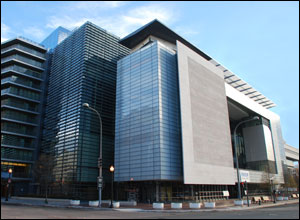
The Newseum, billed as the world’s most interactive news museum, features 14 major galleries, 15 theaters, two broadcast studios and a 4-D time-travel experience. The 250,000-square-foot complex cost $450 million and mixes up-to-the-minute news with centuries of journalism history. The Freedom Forum, a nonpartisan foundation dedicated to free press, free speech and free spirit for all people based in Arlington, Va., is the major funder.
The Missouri School of Journalism, which holds the distinction as the world’s first journalism school, not only serves as the background for Engel’s career but also as the background for the profession of journalism. Therefore, it is one of the few universities mentioned in the complex, Engel said. The Journalist’s Creed, written by founding dean Walter Williams in 1914, is referenced in the ethics center on the interactive floor, where visitors can discuss ethical dilemmas journalists face. To many, The Journalist’s Creed remains one of the clearest statements of the principles, values and standards of journalists throughout the world.
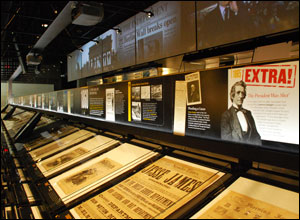
The Newseum also features a 1913 photo of Missouri Journalism students in class, which is displayed in the news history gallery. Williams, along with Dean Frank Luther Mott and Professor Geneva Overholser, the Curtis B. Hurley Chair in Public Affairs Reporting, are listed in the news people database, which features more than 1,000 journalists who have significantly influenced the field.
Engel, BJ ’73, the facility’s managing editor, is just one of several Missouri Journalism influences at the Newseum. After beginning her career as a reporter for the Lorain (Ohio) Journal, Engel eventually worked for such prestigious newspapers as the Des Moines Register and The Washington Post. She now directs the Alicia Patterson Journalism Foundation, which supports investigative journalists and photojournalists worldwide, in addition to curating the Newseum and writing books on the side. Engel said she learned many skills during her time at the School. One of which was persistence, which she credits as the key to acquiring different artifacts for the new Newseum.
Serving as the Newseum’s managing editor is a role that has taken Engel across the country during the project’s development. She is responsible for the news history and the curatorial and exhibits departments in the museum. Although it’s a journalism title, Engel said it works for the Newseum setting.
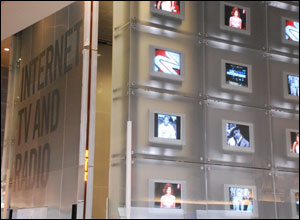
“I got to do everything related to acquiring wonderful, interesting artifacts,” Engel said, “Things like the door from the Watergate complex that the burglars jimmied; the notes from reporter Mike Isikoff’s writing of the first words of Monica Lewinsky; the paint brushes from Herb Block, the editorial cartoonist; a section of the Woolworth lunch counter and two stools from Greensboro, N.C., that set off the three years of sit-in demonstrations, all beginning on Feb. 1, 1960.”
Digging up the years of news history did not always come easily. On one trip, Engel drove her minivan to North Carolina to the spot where the Greensboro four began the sit-in that sparked numerous sit-ins during the Civil Rights movement. She loaded the stools and lunch counter into her backseat and drove the more than 300 miles back to Washington, D.C.
Engel also has received help along the way, from airline crews to other Mizzou grads. She once flew to Pittsburgh to gather the typewriter of Frank Bolden, one of the first two African-American journalists credentialed to cover World War II. The antique machine, given by Bolden’s widow, was too fragile to be stored under the plane.
“The airplane crew was really nice and let me have a separate seat for the typewriter. So those are the fun kinds of things,” she said.
Showcasing the First Amendment and Journalists’ Sacrifices
One major area of the building is the First Amendment gallery, which illustrates the power of freedom of the press to visitors. USA Today editor Ken Paulson, BJ ’75, helped Engel shape the gallery through his earlier involvement with the First Amendment Center in Nashville, Tenn. As an exemplification of the amendment’s importance, the front of the building features a 74-foot tablet bearing all 45 words, each weighing in at about 1 ton.
The two didn’t want the gallery to be boring, Engel said.
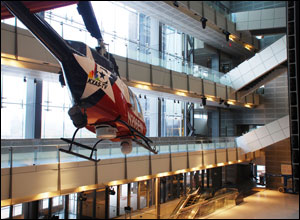
“We wanted people to understand that it’s a living amendment that gets challenged every day,” she said. “We have a great film that has everybody from LL Cool J to Sandra Day O’Connor talking about this very important protection.”
A point of pride for Engel is that visitors will see the amount of sacrifice journalists put into their jobs and the dangers they face.
The Newseum features the first major, permanent Sept. 11 gallery, which displays the radio tower from the north tower of the World Trade Center, the last part of the building most people saw when it collapsed.
“It really honors the many employees who maintained those towers and radio communication in that building,” Engel said. “It also has a wall of newspapers showing how the event was handled the day after.”
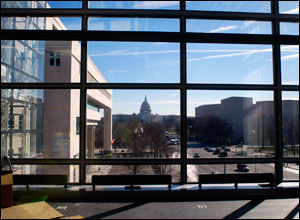
One journalist, Bill Biggert, died that day. His widow gave the Newseum his press passes, camera bag and cameras found with him when rescuers discovered his body. The last 21 frames of his camera are featured in the gallery.
Another item on display is Don Bolles’ car, which Engel helped the Newseum acquire after it sat for 27 years in a Phoenix police impound lot. Bolles, a founding member of Investigative Reporters and Editors, which is now headquartered at the School, was fatally injured while covering a story in Phoenix after sticks of dynamite were placed under the driver’s seat of his car. The incident has been linked to the mafia because much of Bolles’ investigative work involved organized crime. The car is on display in a special alcove.
“It’s such a dramatic and important story for people to see that Don Bolles, as a reporter, was murdered covering the truth,” Engel said. “Instead it sparked all of his colleagues and investigative editors and reporters to come to Phoenix and launch the Arizona Project.”
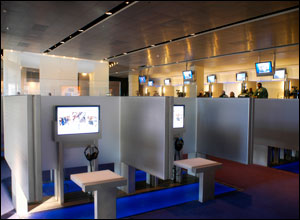
These selfless acts are on display on a daily basis, Engel said.
“It’s those kinds of messages I think will show people that is why we have the First Amendment,” she said. “We’re not accountants. We’re not stenographers. It goes far beyond that.”
The Newseum will feature a journalists’ memorial engraved with the names of every journalist killed each year. The memorial will be updated annually.
Engel traveled to Honolulu handle the acquisition of the remains of four photojournalists killed in Laos during the Vietnam War. Their remains will be installed at the base of the memorial.
“We’re really honored that these men can have a permanent place and let people know that journalism really is a dangerous profession,” she said.
Continuing the Collection
Although Engel has searched out numerous artifacts for the Newseum’s collection, her work is not finished. She continues to hunt down several artifacts that help to make up journalism’s history.
The Newseum displays the camera that photographer Tom Howard used in 1928 to capture Ruth Snyder’s electrocution at Sing Sing Prison. Snyder and her lover were executed for the planned murder of Snyder’s husband in 1927. Howard’s famous photograph kicked off the debate about the lengths of tabloid journalism. However, Engel couldn’t find the hearse used to transport and develop the film.
“The Daily News had a hearse that they had taken the guts out of and turned it into a dark room,” Engel said. “They sent it to Sing Sing, and the film was thrown out of a bathroom window to someone waiting below. They put it in the hearse and raced down to New York, developing it while they drove. I called all sorts of hearse collectors, old car collectors trying to find it, and I never did.”
The Newseum also features a front page gallery, which is updated each morning and displays newspapers from around the world on the first and sixth floors. An interactive database also allows visitors to search for more than 500 daily front pages.
Pulitzer Prize-winning photographs are on display with touch screens showing interviews with living photographers and their portfolios. Many Missouri School of Journalism alumni who are photographers are on display there.
Pictures of the Year International, a program of the Donald W. Reynolds Journalism Institute at the Missouri School of Journalism, was one of the first major programs at the new complex. It began during the recent 65th annual POYi Education and Awards Program, said POYi director Rick Shaw.
“We were thrilled about this,” Shaw said. “It was an honor to be a part of one of the first significant events held at the Newseum.”
Thousands of visitors attended the Newseum’s opening day, and Engel doesn’t envision the crowd slowing down.
“It is just a ‘wow’ experience,” Engel said. “I think every visitor to Washington will want to come here to see it because it’s so up-to-the-minute.”
Updated: April 27, 2020